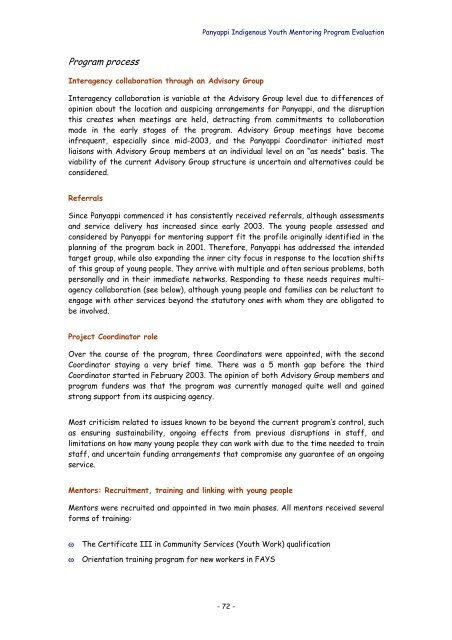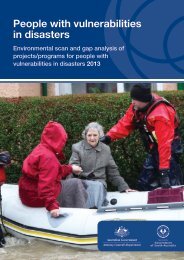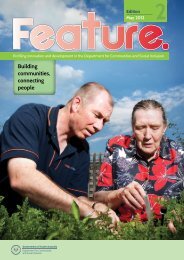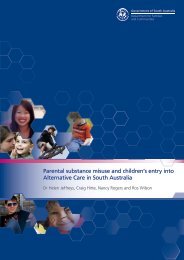Panyappi Indigenous Youth Mentoring Program Evaluation
Panyappi Indigenous Youth Mentoring Program Evaluation
Panyappi Indigenous Youth Mentoring Program Evaluation
You also want an ePaper? Increase the reach of your titles
YUMPU automatically turns print PDFs into web optimized ePapers that Google loves.
<strong>Program</strong> process<br />
Interagency collaboration through an Advisory Group<br />
<strong>Panyappi</strong> <strong>Indigenous</strong> <strong>Youth</strong> <strong>Mentoring</strong> <strong>Program</strong> <strong>Evaluation</strong><br />
Interagency collaboration is variable at the Advisory Group level due to differences of<br />
opinion about the location and auspicing arrangements for <strong>Panyappi</strong>, and the disruption<br />
this creates when meetings are held, detracting from commitments to collaboration<br />
made in the early stages of the program. Advisory Group meetings have become<br />
infrequent, especially since mid-2003, and the <strong>Panyappi</strong> Coordinator initiated most<br />
liaisons with Advisory Group members at an individual level on an “as needs” basis. The<br />
viability of the current Advisory Group structure is uncertain and alternatives could be<br />
considered.<br />
Referrals<br />
Since <strong>Panyappi</strong> commenced it has consistently received referrals, although assessments<br />
and service delivery has increased since early 2003. The young people assessed and<br />
considered by <strong>Panyappi</strong> for mentoring support fit the profile originally identified in the<br />
planning of the program back in 2001. Therefore, <strong>Panyappi</strong> has addressed the intended<br />
target group, while also expanding the inner city focus in response to the location shifts<br />
of this group of young people. They arrive with multiple and often serious problems, both<br />
personally and in their immediate networks. Responding to these needs requires multiagency<br />
collaboration (see below), although young people and families can be reluctant to<br />
engage with other services beyond the statutory ones with whom they are obligated to<br />
be involved.<br />
Project Coordinator role<br />
Over the course of the program, three Coordinators were appointed, with the second<br />
Coordinator staying a very brief time. There was a 5 month gap before the third<br />
Coordinator started in February 2003. The opinion of both Advisory Group members and<br />
program funders was that the program was currently managed quite well and gained<br />
strong support from its auspicing agency.<br />
Most criticism related to issues known to be beyond the current program’s control, such<br />
as ensuring sustainability, ongoing effects from previous disruptions in staff, and<br />
limitations on how many young people they can work with due to the time needed to train<br />
staff, and uncertain funding arrangements that compromise any guarantee of an ongoing<br />
service.<br />
Mentors: Recruitment, training and linking with young people<br />
Mentors were recruited and appointed in two main phases. All mentors received several<br />
forms of training:<br />
ω<br />
ω<br />
The Certificate III in Community Services (<strong>Youth</strong> Work) qualification<br />
Orientation training program for new workers in FAYS<br />
- 72 -












